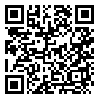Volume 21, Issue 83 (2024)
LIRE 2024, 21(83): 21-25 |
Back to browse issues page
Download citation:
BibTeX | RIS | EndNote | Medlars | ProCite | Reference Manager | RefWorks
Send citation to:



BibTeX | RIS | EndNote | Medlars | ProCite | Reference Manager | RefWorks
Send citation to:
rajabi Z. A Study of Types of Plots in Narratives of Nakhshbi 's Touti Nameh Based on Norman Friedman Theory. LIRE 2024; 21 (83) :21-25
URL: http://lire.modares.ac.ir/article-41-76877-en.html
URL: http://lire.modares.ac.ir/article-41-76877-en.html
, z-rajabi@araku.ac.ir
Abstract: (829 Views)
After Aristotle that was the first theorist of plot, in recent decades, Propp was the first theorist that start searching for common frameworks and patterns in the plot, especially in folktales; And these studies continued after him. Norman Friedman is one of the contemporary narratologists who has studied the structure of the plot, influenced by the methods and views of Aristotle and Propp; and based on the three main components of Aristotle's view, namely action/ fortune, character and thought, he has introduced 14 types of plots. Since structures and themes are generally repetitive in folk tales, in the present study, the types of plots in Nakhshabi's Touti Nameh stories, which are folk works of the 8th century, have been studied in a descriptive-analytical manner based on Friedman's view; While introducing a new perspective to narratology research, find out which one of the 14 types of plots is used in the Touti Nameh. Based on the results, in the 75 main and sub-stories examined, all types of Friedman plots are used, and this shows the richness and structural variety of the plot in this work; It was also found that there is a significant relationship between the use of some of the most frequent types of plots of fortune and character in stories.
Keywords: Nakhshabi's Touti Nameh, Friedman's theory and narrative plan, Criticism and analysis of popular literature stories, Classical Persian prose.
Article Type: مقالات علمی پژوهشی |
Subject:
Popular literature
Received: 2022/01/10 | Accepted: 2022/07/28 | Published: 2024/05/19
Received: 2022/01/10 | Accepted: 2022/07/28 | Published: 2024/05/19
Send email to the article author
| Rights and permissions | |
 |
This work is licensed under a Creative Commons Attribution-NonCommercial 4.0 International License. |








